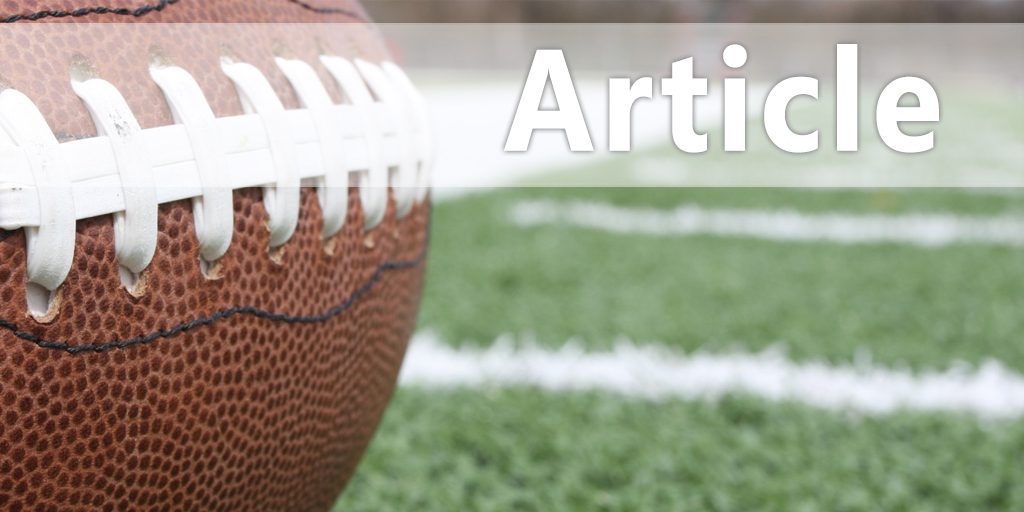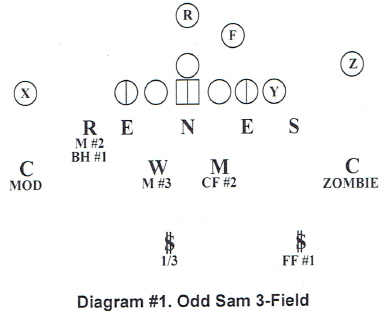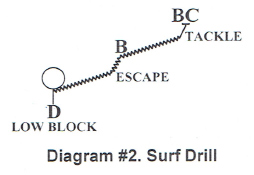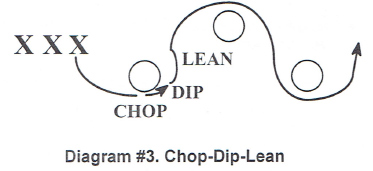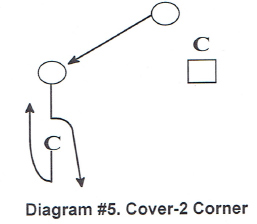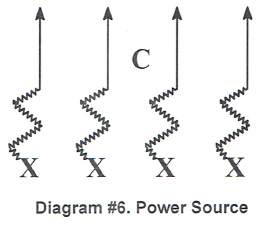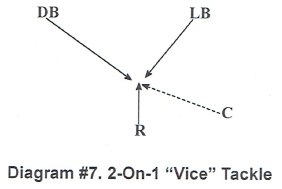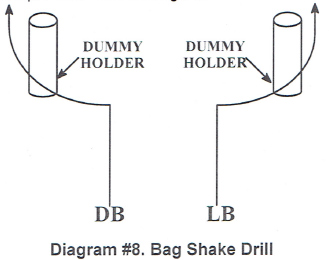|
Eliminating Big Offensive Plays By: Derek Mason - Vanderbilt Univ. Originally Published - Nike 2015 Coach of the Year Clinic Football Manual
When you are looking to play winning football, you have to look at the dynamic you need to play the game the right way. That is especially true defensively. You have to go back to your core philosophy of how you see your defense. One of my core philosophy points is eliminating big offensive plays. That is what I am going to talk about today. With the advent of the spread game, you must be multiple with what you do. Playing teams like Oregon and other teams out West has taught me some things that we can incorporate and they will be helpful as we move forward. Being in the SEC is similar to playing in the PAC 12. The league is deep from the top to the bottom. We start spring ball on Monday and I have five installations to make. The first thing I will start with is base and nickel defenses. We will install those defenses and go for five days running them. When we get into spring ball we want to establish a philosophy and try and figure what our players can do. Personnel is the biggest issue you must deal with in spring ball. Eliminate the Big Offensive Play • Every defense you call must have sound scheme structure and a defined run support system. That sounds simple. However, if you take one defensive structure and align to everything that structure must play, you are talking about a lot of defense. When you talk about 2 X 2, 3 X 1, empty, motions, formations into the field and boundary, there is a tremendous amount of teaching. That tells you to be careful and smart with how much you add. Your players must be ready to play. They must play with speed. If they have too much on their minds, they are thinking and not playing. The first play against Tennessee this year was a big play for us. We knew Tennessee was a big shot team. They knew we had struggled in those areas, we knew they would take shots early in the game. We were ready for that first play and intercepted the ball. My mentality as a secondary coach is the opponent will have to beat me from the top down. They are not going to beat me over the top. They are going to have to throw the ball underneath and do it many times. I am not going to give up the big play. Every down on defense is situational football. First down dictates second down, and second down dictates third down. In our philosophy on defense, we want to control first and second down, so we can be in position to get the ball back by playing third down. Blackboard coaching and coaching • The X's and O's should be complemented by the ability to read, recognize, and react to a play with intentional actions We all know a lot of football. There are many smart coaches sitting in this room. Every coach in this room has a scheme. It is not the scheme I put on the blackboard that is important. It is how the players function within that scheme. It is how they communicate and adjust in that scheme. What happens is the coach comes into the room and puts his install on the blackboard. He talks about it and then they go straight to the field to implement it. It does not work that way. When you install a defense, there are 14 to 15 formations that must be covered before we can do anything. When I install a defense, I cover every formation with that defense. I can take a single safety defense and make it look like a two-high defense. We can play one-high or two high and it will never look like anything but defense. It will never look the same because of how we adjust. react. and focus. That gives us an opportunity to play that play as fast and as physical as we can. I pulled this defense out that we used a Stanford. However, we do not use it much anymore but I wanted to give you an example of a structured defense.
• 4 rushers - 4 under - 3 deep coverage • Ends - End to call - 4-technique, B-gap control, inside pressure lane. End away -4-technique, B-gap control, vs. pass - contain, vs. run - knockback • Nose - 0-technique, vs. pass - pressure lane, vs. run - knockback • Sam - Align to field possible T-Call vs. near #1 or TE/Wing. Hollywood vs. #2 detached. vs. run - C-gap vs. pass - contain • Rush - Align to boundary, vs. run - force, vs. pass - WIN - flat, final #1, SIN match #2. body help #1 • Mike - Align to field. vs pass - WIN - match #3. SIN - curl and final #2. Bounce Rush with switch call • Will - Align to boundary. vs pass - WIN Curl and final #2, SIN match #3 • Safeties - Sam Side - match #2 body help #1, SIN - flat and final #1. Boundary side -middle third • Corners - Field - WIN match #2. body help #1, SIN flat and final #1, Boundary side -Middle third This gives the players the techniques alignments. and responsibilities, versus different sets. On the chart are communication calls as well. The things on the chart are the tricks of the trade, when they understand all the things they are ready to play. You cannot have too much defense. You must talk in terms of -keep it simple" so the players can play. I am not going to have a bunch of different defenses. I am going to have four or five defenses that I can play and adjust to everything. We will utilize and make our adjustment to our game plan relative to who we are playing. For example. we see a lot of zone read in today's football. People are trying to figure out how to get the extra player in the box. You must decide if you want to play quarters or push your outside linebackers out and push everything in to the safeties. With our structure sheet, we have a sheet of formations with the adjustment and alignments shown. It shows far-I, slot, gun split/jet motion, ace set. empty. and many more. It has adjustments for all the personnel groupings. When I give an install to our players that install is five pages long. One coverage is five pages long. In those pages are motion adjustments, empty adjustments. F.I.B. (Formation Into Boundary) adjustments, and everything they could possibly see on the football field. That may sound crazy, but I want to cover everything. Football I.Q. • What can you decipher or identify? This is the fun part for me because we are going to teach the players the game. What information can I give the players? We want to give them information but we want to -Keep It Simple" or -Dumb It Down." Coaches take the films and set in a room all week and break down the tendencies of the opponent. We talk football and break down everything we need to know about a particular team. Then we make a chart with those particular tendencies on it. That chart is detailed and chocked full of information about the opponent's tendencies. It is great information but we are giving it to the players to digest. We have the players for a total of 20 hours a week. They cannot possibly remember everything that is on that tendency break down chart. When we played South Carolina, I saw some things I thought were worth spending some time on. I talked to our defensive quarterback about it. I pointed it out on the tendencies sheet. The thing I saw was in a 2 X 2 formation, when they threw four verticals the quarterback always looked to the wide side of the field and threw the ball into the boundary seam. He did that because that is the easiest throw. The other thing I picked out from the tendencies sheet was the notes on their screen plays. Of the 35 screens they threw, 12 were F.I.B. (Formation Into Boundary) screens. Your players cannot remember all the tendencies, but the ones that occur repeatedly are the ones you want to concentrate on. You give those things to your players. As long as they are aligning in defenses they know and understand they are not worried about what they are doing. They are looking at the offenses for the indicators. If the indicators keep showing up, they can play faster. We saw it on the tape. We put it on the cut-up and gave it to the players. They watched on tape, understood it, and executed when it happened in the game. You cannot fix every tendency, but the one that need to be played, you need to fix. The second tendency was the formation into the boundary slip screen. When you see the tendencies and start to play them that is when you eliminate big plays. You cannot give it all to them but give the ones that mean the most to them. Tool Box Mentality • What are the necessary tools to complete the task? For us defensively. I want to make sure our players understand that it takes a certain skill set to do what we do. Up front we talk about blow delivery and knockout. When you are a 3-4 team you must be physical up-front. You have to deliver blows and get off blocks. That is particularly true on the edges. We work on a "Towel Sled." It is a one-man sled and we have several of them. On the sled. we work on explosion, hand placement, extension. and escape. The power in these drills are generated from the ground up. We explode and punch, lift and press the sled up. rip through to escape and get off the block. The "surf" drill concentrates on eyes, hands, and feet. (Diagram #2) The defender begins by playing off a low block, he shuffles outside, comes up the field and takes on a blocker. You might want to add a second blocker into the drill. After the defender plays off the blockers, he makes a form tackle on the ball carrier.
I want him to use his eyes, hands, and feet. That is all I care about in this drill. He wants to keep his feet active at all times. Every day we go through fundamental rotation. This is one of the drills we do. (Diagram #3) Chop, dip, and lean are more tools we have in the tool box. We have three stand-up heavy bags. The defender starts at an angle to the first bag. As he approaches the bag, he chops down with the inside hand to the bag. He dips and leans into the bag and comes out running low. He does the same thing to the next two bags as he weaves in and out.
The defender has to stay tight on the bag or he cannot make the next bag. It is a good change of direction drill and the lean of a pass rusher coming around the corner. We work every day on building tools for their tool box. When they get into the games they have the proper tools for the job that needs to be done. Eyes • What is your key read? When I watch the defense, I watch the eyes of the defender. The biggest mistake they make is in their eye progression. They are looking at the wrong place at the wrong time. If the player does not know what his eye progression is and you cannot confirm what he sees, he cannot play pass defense. His eyes are all over the field and he cannot see anything. They become reactive instead of proactive. This is a drill to train the eyes. In this drill the coach stands between two players representing offensive guards. (Diagram #4) He has a running back behind him and a tight end receiver to his left. The defenders in the drill are the safeties. One of the safeties is a down safety and the other is a middle of the field safety. The down safety reads the tight end and the middle safety reads the two offensive guards.
The coach runs a play-action fake with the play-side guard showing a block. However, the backside guard show pass set. The middle safety plays the deep middle and the rolled safety goes to his flat responsibility. The next drill is a corner drill for a cover-2 corner. (Diagram #5)
The cover-2 corner is going to key the end man on the line of scrimmage. If the receiver releases, the corner hinges and gets his eyes on the quarterback. The quarterback becomes his key. He wants to re-route the receiver inside and play whatever comes into the flat area. Hands You cannot play defense if you do not have violent hands. They are the tools that keep blockers away from the defender. The defender has to learn how to use his leverage and make it work for him by good punches and hand placement. Feet/Footwork We talk about movement all the time. It is the essence of defensive football. The footwork must match the eye progression of the player. The corners footwork goes with his eye progression. His re-route footwork works with his eyes. Any time we work a drill it may be specific to some other skill, but we always work footwork in the drills. The power source in the footwork comes from proper foot placement on the ground. We teach players how to move on the inside balls of their feet. They must keep the feet within the framework of their body. When the feet get outside the framework of the body, you cannot transfer the weight when you need to do it. When we drill this movement we do it in a side-to-side. forward. and backward movement. They start with a side-to-side movement. They face in one direction and step with the outside foot toward the coach. The second step comes down and replaces the first step within the framework of the body. They take three to four steps in that pattern. The emphasis is on not over stretching outside the framework of the body. When the coach gives the signal, they pivot and sprint through the coach. The drill involves the players almost stomping the ground as they step forward one step at a time. They take small steps within the framework of their body. It is not a choppy step. but a slow individual step one at a time. They pound the steps on the inside ball of their feet until the coach gives them the signal to sprint forward. When we do the forward stepping we incorporate an interception drill or some kind of ball catching drill. They step forward for three or four steps, sprint toward the coach, and catch a pass. This is a simple looking drill, but I did this drill in the NFL. Football in the NFL is a game played by men who move extremely well. If they do this drill at that level, I am going to do it at my level. (Diagram #6) We do the same kind of drill moving forward at a sideways angle. It is the same movement except the players are stepping at an angle right and then left.
If players try to go fast doing this type of movement, they cannot control it. If you teach them to understand the muscle memory part of it, they do much better. Once they get the hang of going side-to-side, forward, and on an angle, we turn them around and they go backwards. It is the same drill going with a backward step. On the command they zone turn, sprint to the coach, and catch the ball. This footwork is extremely important to the safeties. The reason we throw the balls is to keep it football related. It is footwork that deals with football. • Trust your training This is the stage when you pull all of this together. In my coaching career I have never seen as many missed opportunities as we had in one year. We had opportunities for 37 interceptions. I talked to the defensive line. I asked them what they were seeing. If the quarterback is in the shotgun and the ball is coming out, get your hands up. In today's football, the ball gets out of the quarterback's hands in 2.1 seconds or less. The defensive line does not have time to get to the quarterback. The offense wants to get the ball to the playmaker extremely fast and extremely quick. We need to understand that is what they are trying to do. The defensive line must believe what they see. If they see the pass set of the offensive linemen, they want to attack, but they must see the quarterback. If he is getting ready to throw, get your hands up and be ready to jump. Eliminate the big play. If you are not talking to your defensive linemen about doing that then you are not coaching ball. The defensive backs that drop the interception in their hands, do not believe what they see. Quarterbacks give away many things in the course of a football game. I try to get our defensive backs to understand they do not play wide-outs, they play quarterbacks. If you study enough film, some quarterbacks will show you exactly what they are going to do. Be Strong at the Point of Attack (anchor the point) Today the football very seldom comes downhill at the defense. Some teams still do it but most of them are going sideways. We want to come off the ball and dominate the line of scrimmage. I want to own the line of scrimmage. I believe right now we have three guys up front that can play. The outside linebackers are edge players. If the three guys up front can dominate, the linebackers can play fast. We bounce the ball and run it down. Defensively we have nine starters returning for next year. I have no seniors. The entire team is sophomores and juniors. We will be good when this group grows up and learns how to hunt. We have a freshman nose tackle. He is 6' 4" and 315-pounds. He is learning how to play. When he started he slept through the first five games. He is learning how to get off the ball and to get off blocks. We are looking for players that will deliver the knockout and squeeze gaps. Primary and Secondary Run Support I remember watching the Nebraska-Wisconsin game a couple years ago. Wisconsin ran for 475 yards. If you cannot stop the run it does not matter what you do. To play strong defense you must have great run support on the edge. If teams can get to the outside with the speed in the game these days it will be a big play. In run support, the structure of the defense must be very clear as to which players are inside/ out and which ones are outside/in. If you give your players visual references that will give your players a chance to play good defense. Backside Flow and Contain Rules When flow goes away, the outside linebacker is the backside cutback reverse runner. The defender does not need to see the reverse coming, he only has to do his job. If he is playing his rules, he will be in position to play the reverse. Pursuit Everybody talks about it but you need to turn on the tape and see what is happening. I see the highs and lows. I turned on the game tape and that is what I saw. I turned on the practice tape and that is what I saw. If your players run sometimes in practice but not all the time, that is a true reflection of how you play defense. When I was a defensive coordinator I never allowed that. I held them accountable and made them work at it. To me that is a statement of a coach. It is how you coach and what you believe in. You must do more than talk about pursuit. You must make it a way of life. At Stanford for two years we were in the top ten in forcing turnovers. It came from players getting to the ball. I do not care what type of play it is. You must have players running to the ball. We talk and drill tips. pulls, strips and forced fumbles. You get what you emphasize. That is why I talk about how much defense you coach. If you are coaching a lot of defense, you do not have time to emphasize much. If your defensive menu is small, you can emphasize a lot. You can emphasize pursuit, eyes, indicators, and running to the ball. When you talk about eliminating big plays, it is the little things that matter. The big things like the scheme of the defense will handle itself, if you do the little things. You must get your players to understand that running to the ball is not a choice. it is a must. Tackling Plan I had a chance to talk to Coach Dantonio. I have a friend, Brad Salem, and he is the quarterback coach up there. I asked Brad what they do about tackling. When I was at Sanford, we tackled year round. We did not take people to the ground, but we had a big thud hit every day. We did not do that this year at Vanderbilt because we did not have the bodies. Brad told me they tackle every day of the year. When tackling is the issue. you cannot get enough reps in tackling. The amount of tackling you do is relative to how many times your players have to make those plays. Can any coach in here tell me when it is not critical to make a tackle? You cannot tell me because it is always critical to make a tackle. I am going back to what I know and that is tackle every day. We will tackle everyone except the quarterback. The first tackling drill is a "2-on-1 vice" tackling drill. (Diagram #7) We align two defenders 10-12 yards apart. The receiver runs up the hash marks and the coach throws him the ball. The defenders converge on the receiver. The emphasis of the drill is on the leverage of the tackle.
When the ball is in space, the tackler wants to make sure they leverage the ball. The defender wants to maintain their leverage position regardless of what the receiver does. If you are in an inside leverage position, that is where you stay and focus on the inside hip of the receiver. If the tackler has an outside leverage position he stays outside as he converges on the receiver. As the outside defender converges on the ball he. yells, "OUTSIDE, Outside, and outside." The inside defender yells, "INSIDE, Inside, and inside." There is no bill for communication. It is free. If it is free. use it. I cannot tell you how many times we have two defenders on one receiver and they both take an outside leverage position. The receiver cuts inside and we lose the tackle. There is no excuse for that. It is simple and they must not give up their leverage position. They converge to the hip and bite the ball. This is a position drill, with no live tackling. If you do the drills right, they will show up in the game. If you cannot find your drills in a game, you are practicing the wrong things. If a drill has a place within your scheme do it. If there is no place for it, do not waste your time even if the drill is a good drill. We do a drill called "bag shake." (Diagram #8) The defensive player aligns on the sidelines with a dummy holder 10 yards from of him. The dummy is a light weight dummy. The tackler runs downhill toward the bag holders. When he gets in close proximity, the bag holder shakes the bag from side to side then tosses it to one side or the other. The tackler catches the bag in a wrap technique and runs through it.
This drill teaches the tackler to change direction on the ball carrier, wrap, and run through the tackle. What you want is the tackler to come downhill and lead step into the tackle. You do not want him to crossover with his steps. That puts all the weight to his outside. That is fine if the ball continued to run in that direction. However, if the ball cuts back, the tackler loses the tackle. When we approach the ball carrier, we want to lead with the near foot to the ball carrier. It is the same foot and same shoulder technique of tackling. As the tackier approaches the ball carrier, he wants to try to get some kind of leverage either inside or outside. If the ball carrier is long striding, then the tackler can long stride. However, if the ball carrier starts to chop and short stride, the tackler must mirror that action. The tackler must continue to gain ground at the ball carrier. When the ball carrier moves, the tackler moves with his near foot. It is near foot, eyes up, and near shoulder. That is how we coach it. We start our spring practice on Monday. We are starting early because we did not have any post-season bowl game. We wanted to get back to work as soon as we could. This spring we are going to be extremely physical. It was hard on me being away from football as a head coach. I sat on the sidelines and let my staff coach. I went to the meetings and asked some questions. However, you cannot build a bridge sitting on the sidelines. I cut my teeth on defensive football and it is hard to talk through someone else to get what I want done. I am not saying we will be the best defense in the world. We will be nasty, physical, know how to attack, and we will play hard. We have nine players returning on the defensive side of the ball. We have a chance to be a solid defensive team. All that remains to be seen. When you coach football for a long time, you realize the simple things you do lay the foundation and become the fiber of exactly who you are. Whatever your philosophy is take your films and make sure your coaching speaks to that philosophy. If you ever need me or want some cut-ups, give me a call. If you want cut-ups of Vanderbilt, come to our place and we will share them with you. If you want a drill tape, I can send that to you. Drills are for everyone. We are all in this game together. I am not separate from you and you are not separate from me. I coached high school, junior college, 1-AA, and the NFL. It does not matter. It is the same game and we all walk with the same stride. Some of the best teachers in this game are high school coaches. I believe that. If there is anything we can do for you, give us a call. We have a rule about line movement. Our rule is do not let movement keep you from doing your job. We work on that in spring, summer, and fall workouts. Many of our defensive players are tied on a string to certain offensive personnel. If he moves, we move. Often that movement is an indicator for a secondary play. Motion is a great indicator. When there is motion, the snap of the ball is coming or something is going to happen. We talk to our players about the indicators that help them. Sometimes it is cadence, formation, or motion. I see my time is up. Thank you.
|
